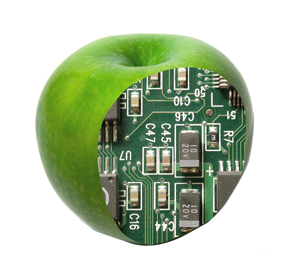 Recently a book came out called “Wired for War” by Pete Singer. I saw Singer on the Daily Show and heard him on NPR and the Commonwealth Club. He’s trying to tell the world about the quiet revolution in warfare that has happened during the Iraq War. These aren’t the self-directed robots of sci-fi, but remote-controlled robots whose pilots are in some computer room thousands of miles from the site of the conflict.
Recently a book came out called “Wired for War” by Pete Singer. I saw Singer on the Daily Show and heard him on NPR and the Commonwealth Club. He’s trying to tell the world about the quiet revolution in warfare that has happened during the Iraq War. These aren’t the self-directed robots of sci-fi, but remote-controlled robots whose pilots are in some computer room thousands of miles from the site of the conflict.
In Las Vegas a few months ago, I turned on the TV and saw on the local station that there was a bomb threat at the Folsom Street Experience. A robot came to scout the area and clear it. I recalled I’d seen bomb-defusing robots before, in a documentary about the Israeli-Palestinian conflict.
The role of robots in warfare is truly disturbing, given the power it has to reduce risk on the part of the entity waging war. Talk about moral hazard. But there is another aspect of advanced robotics that will bring its own set of questions, and it’s coming soon to a garden near you.
I recalled I’d seen bomb-defusing robots before, in a documentary about the Israeli-Palestinian conflict.
Agricultural robotics. Companies such as Vision Robotics are working on technologies for machines that can pick fruit. Think of the dexterity and visual acuity needed. Humans can both find the fruit with their eyes and pick it without crushing it with no problem. But soon a machine will be able to do it faster, cheaper, and more efficiently.
These steel arachnids will, like so many labor-saving technologies in the past, cut two ways. In one sense, it will endanger labor. What will happen to the farmworkers who pick that fruit now? In another sense, it will relieve human pain. The drudgery of picking fruit in the hot sun for endless hours will be spared.
We’re gradually moving towards a condition where humans will live in an automated garden. Already the conditions of material survival occupy far less time than they did for previous generations. As technology progresses, we can expect more bounty with less human effort. This sounds fantastic on the surface, and futurists and sci-fi writers have long predicted an automated utopia, free of drudgery, where humans are free to pursue art and sex, the sensual and aesthetic delights, and progress intellectually and spiritually as their time is freed up by an army of robot workers.
The two problems this utopia presents are already very much with us.
One, what to do with the labor force no longer needed? We aren’t dealing with this one at all. Vast populations are warehoused, living on subsistence from machine-harvested food, with no connection to meaningful labor, the land, and no aesthetic utopia to pursue. They are simply surplus humans. A film I just saw called Gomorrah that portrays this condition – it takes place in Italy but the same conditions exist elsewhere.
Two, how to balance our increasing power over nature with the restraints of natural systems? This is a moral question just as big, and interrelated with the first.
I tend to think that the answer to both has a lot to do with education. But it has to be a progressive education that fosters creativity and is directed towards the whole person. And the question of labor is one that our robotic future will have to address.